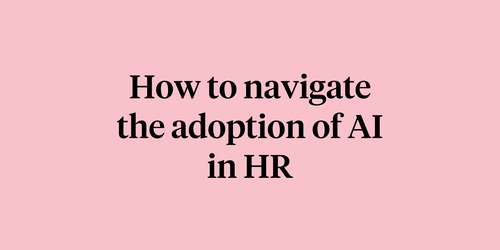
Why the majority of People Analytics initiatives fail without change management

Written by

Principal, Research & Customer Value, Visier
While people analytics is currently having a moment in the industry, the basic concept, sometimes referred to as workforce or HR analytics, has existed for the better part of two decades.
Although we’re long past the early adoption stage with people analytics, many business leaders still don’t have what they need to drive people-centric change in organizations. A 2018 CIPD survey said only 39% of business professionals had access to people data for decision-making purposes.
But more businesses understand the value of people analytics technology and are eager to leverage its value. While the majority (77%) of HR pros say they know people analytics are important, only 32% felt ready or somewhat ready for analytics.
To implement people analytics successfully, change management when implementing and driving technology adoption should be part of the equation and in fact, is the critical success factor and actually predicts improved financial performance.
This finding formed the basis of our newly released research and paper on Leading Practices in People Analytics Change Management.
Change management requires a multi-prong strategy
During the course of our research into this topic, we repeatedly saw that the most successful and strategic HR organizations focus their people analytics efforts on translating workforce issues into business problems and producing business outcomes. That and getting buy-in from the CHRO and other key leaders can go a long way in ensuring organization-wide interest in people analytics.
When it comes to incorporating people analytics in an organization, the change management program will need to include a few steps to ensure a successful implementation strategy.
Change management focuses on enabling organizational change to a data-driven mindset and fostering broad use of analytics to improve decision-making. We identified nine leading practices that help establish a strong change management approach. Here I highlight four of these practices.
The first step is to articulate a defined vision
Organizations who have successfully implemented people analytics had a clear vision of how workforce insights tied into their business strategy, goals, and objectives. Based on our research, being “data-driven” and “insight-led” was often a direct component of their workforce strategies.
An equally important part of an organization’s vision is to define the expected value, while also recognizing that desired value is dependent on the data available from which to improve decisions.
For example, the analytics team at Experian engaged the HR leadership team from day one of their people analytics journey. Because they explained the value-add that people analytics offered the organization, HR leaders made “being insight-led” a pillar of its workforce strategy to ensure that data should be front and center in the drive to optimize the workforce.
Set strategic goals to meet your unique needs
Now it’s time to establish the “why” behind implementing people analytics. This means setting some strategic goals and objectives that are unique to your organization. They’re often tied to the business’ bottom line and centered around expected growth, profit objectives, and margin expansion.
Once these organizational issues are identified, you can develop your people analytics goals by answering the following questions:
- What, if any, are the limiting factors to accomplishing these goals?
- What are the talent issues surrounding these factors? Is it how you acquire and develop talent? Is it how you reward and keep employees engaged?
- Do you have issues with leadership capabilities?
- Are there any big decisions you need to support such as an acquisition, an expansion, or a layoff?
- Will you need to bring together financial and customer data along with people data to answer any of these questions?
Define your data
The data that informs people analytics often sits in a variety of places within your organization—think talent management software, your HRMS, learning management software, financial and operating systems, and more.
Before you dive into implementing people analytics into your business, you’ll need to define your data. What are the things you want to measure and where is that information? Then standardize what each metric looks like so everyone is on the same page.
Our research shows that headcount definition is the first piece of data that many organizations must agree on, but that is only the start. This is a continuous process as data validation is done during implementation of people analytics.
Establish governance and oversight
Our research unveiled that organizations had a number of approaches to overseeing people analytics. Your approach to governance will need to be tailored to your organization’s needs; but the crucial takeaway here is that you need to have a formal process in place to ensure you get the ROI needed from your investment in people analytics.
Moving forward with successful people analytics change management
While incorporating a comprehensive new HR activity like people analytics is a daunting challenge, creating a thoughtful change management plan can be key to the success of the program. Following the aforementioned steps can ease the transition and ensure you set your teams up for success from day one.
Want to know more about the ins and outs of people analytics change management—including education and training, establishing a cadence of communications, creating alignment, structuring your team, choosing your evangelizers, and establishing a center of excellence?
Download our white paper to get deeper insights into the success strategies needed to implement and enable people analytics activities in your organization.

